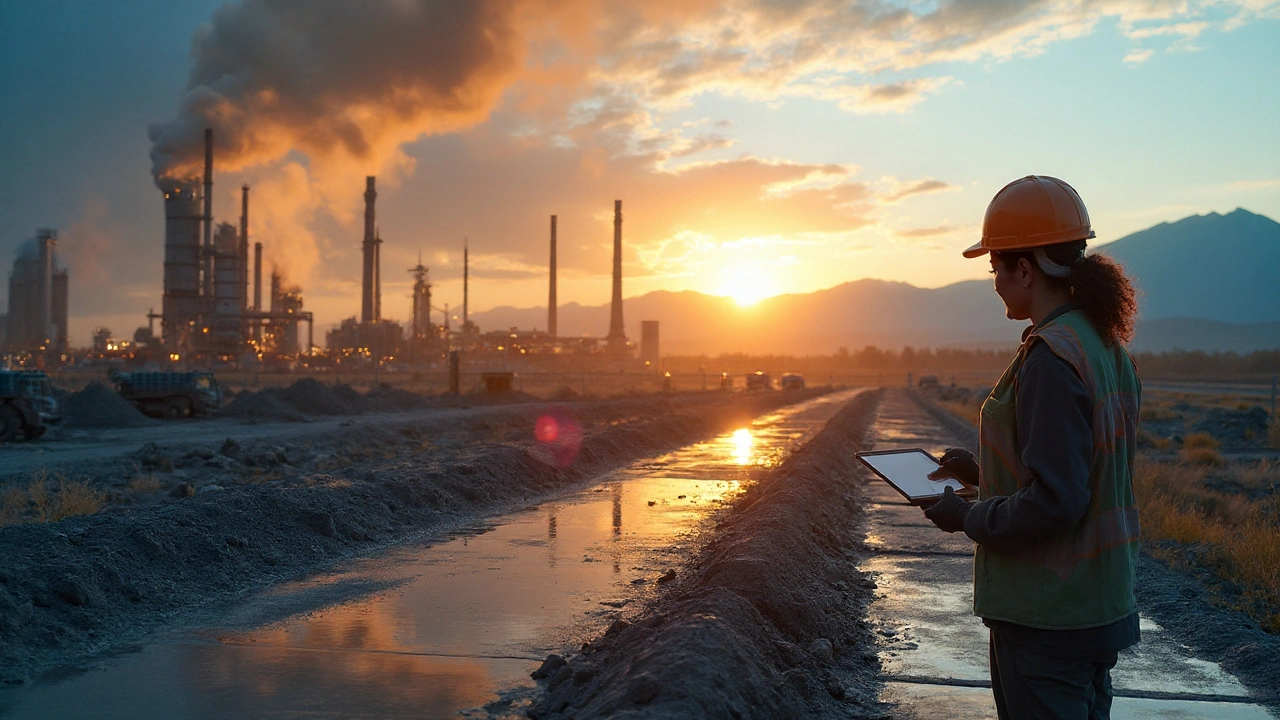Cement Emissions: What They Are and How to Cut Them
If you’ve ever wondered why construction sites feel so dusty, you’ve probably heard the term “cement emissions.” It’s not just dust – it’s a big source of CO2 that adds to climate change. Every time a cement plant heats limestone, a lot of carbon escapes into the air. That CO2 stays there for decades, warming the planet.
Why should you care? Cement is in everything from sidewalks to skyscrapers. When the industry keeps pumping out emissions, the whole world feels the heat. Even if you’re not building a bridge, the extra carbon can affect the air you breathe and the weather you experience.
Where the Emissions Come From
The main culprit is the chemical reaction that turns limestone into clinker – the core of cement. Heating limestone to about 1,450°C needs a lot of energy, usually from coal or natural gas. That burning releases CO2 directly, plus the limestone itself gives off carbon when it breaks down.
Another source is the electricity used in grinding, transport, and packaging. If the grid runs on fossil fuels, those emissions stack up quickly. Even the trucks that deliver cement add to the total footprint.
Practical Ways to Trim the Carbon
One easy win is using alternative fuels. Some plants now burn waste material, wood chips, or even used tires instead of coal. It cuts the direct fossil‑fuel burn and also helps manage waste.
Blending cement with other materials is another smart move. Adding fly ash, slag, or calcined clay can replace a portion of the clinker, lowering the amount of CO2 released per ton of cement. The result is a product that works just as well but has a smaller carbon badge.
On the supply side, improving energy efficiency pays off fast. Upgrading kilns, capturing waste heat, and using modern control systems shave off both fuel use and emissions. Some factories even capture the CO2 they create and store it underground – a technology called carbon capture and storage (CCS).
If you’re a builder or homeowner, look for “low‑carbon” or “green” cement labels. These products often have a lower clinker factor and use recycled materials. Using concrete mixes that need less cement, like high‑performance concrete, means you can build the same strength with fewer emissions.
Finally, think about design. Smaller footprints, longer‑lasting structures, and better insulation reduce the need for new cement in the future. Reusing existing buildings or retrofitting them also cuts the demand for fresh concrete.
Bottom line: Cement emissions are a big part of the climate puzzle, but the industry has many tools to cut the carbon load. From alternative fuels to smarter mix designs, each step makes a difference. By choosing low‑emission products and supporting greener practices, you help lower the overall carbon footprint – and that’s good for the planet and for you.
Calcium Carbonate and Climate Change: Roles, Risks, and Real Solutions (2025 Guide)
- Benjamin Aghaki-Allen
- Climate & Environment
- 15 comment
Does calcium carbonate help or hurt the climate? Clear 2025 guide on cement, oceans, farming, and fixes-what really cuts CO2 and what to avoid.
VIEW MORECategories
Popular posts
-
OTC Cough Suppressants vs. Expectorants: How to Choose the Right One for Your Cough
Benjamin Aghaki-Allen -
White Cohosh Supplement Guide: Benefits, Dosage & Safety
Benjamin Aghaki-Allen -
Pharmacist Responsibility for Reporting Generic Drug Problems
Benjamin Aghaki-Allen -
How to Talk to Your Doctor About Flatulence and Digestive Issues
Benjamin Aghaki-Allen -
Compare DDAVP Spray (Desmopressin Acetate) with Alternatives for Bedwetting and Diabetes Insipidus
Benjamin Aghaki-Allen
Popular tags
- side effects
- online pharmacy
- medication safety
- dietary supplement
- gut health
- blood pressure medication
- alternatives
- generic drugs
- dosage
- weight management
- quality of life
- cheap generic Zoloft
- affordable sertraline
- ED medication comparison
- Tadalafil
- comparison
- medication adherence
- therapeutic equivalence
- Hatch-Waxman Act
- generic vs brand
